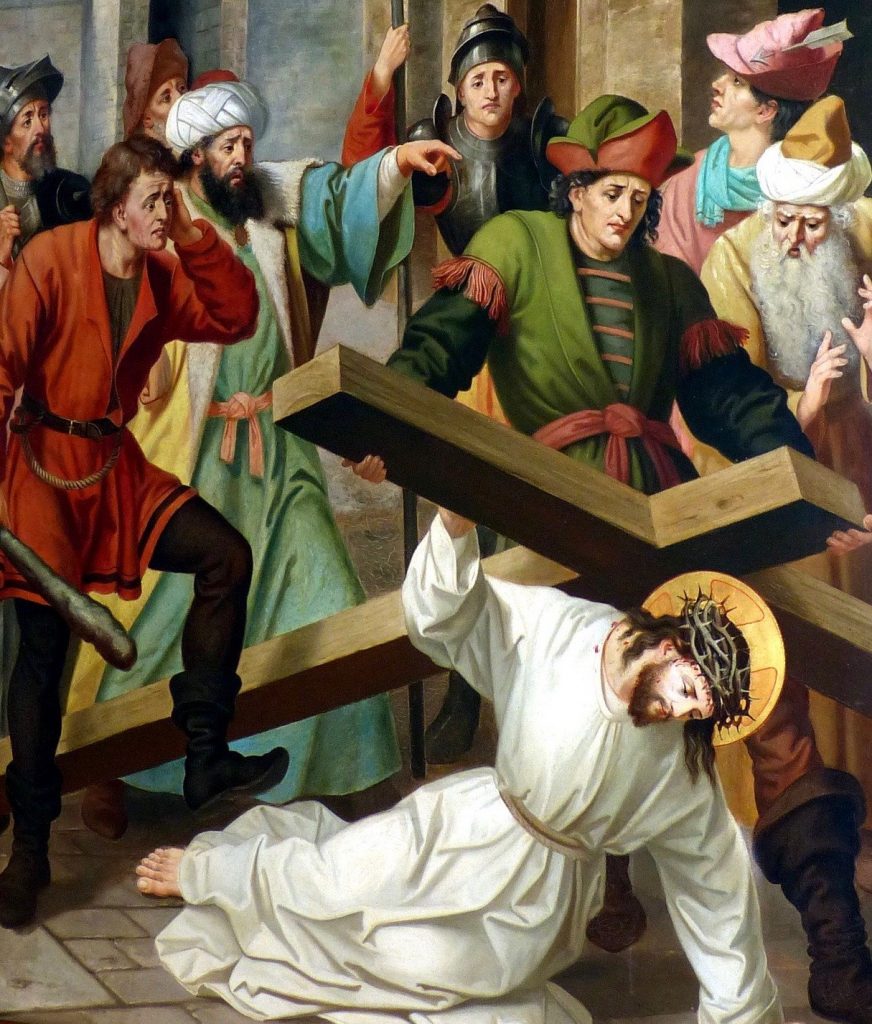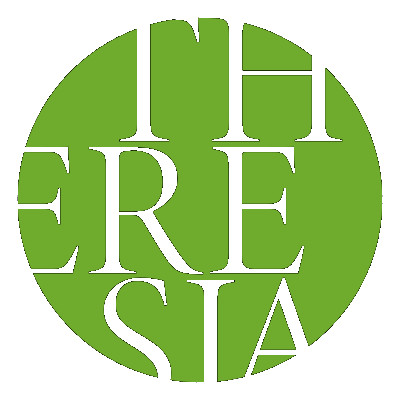
On the occasion of this Easter, we want to dwell on the instrumental music cycle above the 7 last words of our Redeemer on the cross Hob. XX/1:A, composed by Haydn in 1787 at the request of Don José Saenz de Santa Maria, Marquis of Valde-Iñigo, for the Good Friday morning ceremony.
The composition was commissioned to help reflection on each of the seven phrases or words spoken by Jesus during the Passion, as recounted in the Gospels of John, Luke, Mark and Matthew.
In a later publication in 1801 (to which a choral part was added) Haydn himself added an important testimony regarding the genesis and enjoyment of this ceremonial music: “About fifteen years ago, I was asked by a canon from Cadiz to compose music for The Last Seven Words of Our Redeemer on the Cross. In the cathedral of Cadiz it was tradition to produce an oratory for Lent every year, in which the music had to take into account the following circumstances. The walls, windows and pillars of the church were covered with black drapes and only a large lamp hanging from the centre of the ceiling broke that solemn darkness. At noon the doors were closed and the ceremony began. After a short service the bishop would go up to the pulpit and pronounce the first of the seven words (or sentences) by giving a speech about it. After that he came down from the pulpit and prostrated himself in front of the altar. This time interval was filled with music. In the same way the bishop would then pronounce the second word, then the third and so on, and the music would follow each speech at the end. The music I composed had to adapt to these circumstances and it was not easy to write seven Adagiagios of ten minutes each without boring the listeners: to tell the truth it was almost impossible for me to respect the established limits”.
Each of the seven internal movements, called sonatas, has the function of creating the atmosphere for the moment of recollection that followed the canon’s commentary, and for this reason they are all characterized by slow and solemn movements (Grave, Largo, Adagio or Lento). In each sonata the melodic line is structured on the hyphenation of the Latin text, thus creating a direct relationship between the words and the music. In a letter dated April 8, 1787 to the London publisher Forster, Haydn declared that “each sonata, or each lyric, is expressed by the means of instrumental music alone in such a way that it will necessarily arouse the deepest impression in the soul of the most distracted listener”.
The sonatas are preceded by a dramatic and solemn Introduction in D minor, which opened the ceremony, and conclude with a movement entitled The Earthquake – Soon, which represents what is told in Matthew’s Gospel, 27:51: “Then, behold, the veil of the temple was torn in two from top to bottom; and the earth quaked, and the rocks were split”. This piece, of great emotional impact, comes to abruptly interrupt the contemplative succession of seven slow movements, and does so with dynamics ranging from forte to fortissimo with three fff that appears at the fourth last measure of the piece (the only one present in the entire composition). The Earthquake is the only piece in the Seven Words that involves the intervention of the trumpets and timpani, otherwise absent during the Introduction and the seven sonatas. A similar reference can also be found in Johann Sebastian Bach’s Matthäus-Passion (1727), which in the recitative “Und siehe da”, based on the same text, entrusts the cello and the continuo with various sequences of sprints and notes replied or trembled, evocative figures that can also be found in the final piece of Haydn’s composition.
In addition to the original version for orchestra, in the same year the composer also published a version for string quartet and one for harpsichord or piano: these two arrangements, destined according to a widespread commercial practice for domestic use, undoubtedly contributed to the fame and immediate diffusion of the piece.
©Simone Laghi, 2020
ITA
In occasione di questa Pasqua, ci vogliamo soffermare sul ciclo Musica instrumentale sopra le 7 ultime parole del nostro Redentore in croce Hob. XX/1:A, composto da Haydn nel 1787 su richiesta di Don José Saenz de Santa Maria, marchese di Valde-Iñigo, per la cerimonia mattutina del Venerdì Santo.
La composizione fu stata commissionata per aiutare la riflessione su ciascuna delle sette frasi o parole pronunciate da Gesù durante la Passione, così come raccontato nei Vangeli di Giovanni, Luca, Marco e Matteo.
In una successiva pubblicazione del 1801 (alla quale venne aggiunta una parte corale) lo stesso Haydn aggiunse un’importante testimonianza relativa alla genesi ed alla fruizione di questa musica cerimoniale: «Circa quindici anni fa mi fu chiesto da un canonico di Cadice di comporre della musica per Le ultime sette Parole del Nostro Salvatore sulla croce. Nella cattedrale di Cadice era tradizione produrre ogni anno un oratorio per la Quaresima, in cui la musica doveva tener conto delle seguenti circostanze. I muri, le finestre, i pilastri della chiesa erano ricoperti di drappi neri e solo una grande lampada che pendeva dal centro del soffitto rompeva quella solenne oscurità. A mezzogiorno le porte venivano chiuse e aveva inizio la cerimonia. Dopo una breve funzione il vescovo saliva sul pulpito e pronunciava la prima delle sette parole (o frasi) tenendo un discorso su di essa. Dopo di che scendeva dal pulpito e si prosternava davanti all’altare. Questo intervallo di tempo era riempito dalla musica. Allo stesso modo il vescovo pronunciava poi la seconda parola, poi la terza e così via, e la musica seguiva al termine ogni discorso. La musica da me composta dovette adattarsi a queste circostanze e non fu facile scrivere sette Adagi di dieci minuti l’uno senza annoiare gli ascoltatori: a dire il vero mi fu quasi impossibile rispettare i limiti stabiliti».
Ognuno dei sette movimenti interni, chiamati sonate, ha la funzione di creare l’atmosfera per il momento di raccoglimento che seguiva il commento del canonico, e per questo motivo sono tutti caratterizzate da andamenti lenti e solenni (Grave, Largo, Adagio o Lento). In ciascuna sonata la linea melodica è strutturata sulla sillabazione del testo latino, creando così un rapporto diretto fra le parole e la musica. In una lettera dell’8 Aprile 1787 all’editore londinese Forster, Haydn dichiarò che «ogni sonata, o ogni testo, è espresso dai soli mezzi della musica strumentale in maniera tale che solleciterà necessariamente l’impressione più profonda nell’animo dell’ascoltatore più distratto».
Le sonate sono precedute da una drammatica quanto solenne Introduzione in re minore, che apriva la cerimonia, e si concludono con un movimento intitolato Il Terremoto – Presto, che rappresenta quanto raccontato nel Vangelo di Matteo, 27:51: «Ed ecco, la cortina del tempio si squarciò in due, da cima a fondo, la terra tremò, le rocce si schiantarono». Questo brano, di grande impatto emotivo, giunge ad interrompere bruscamente il contemplativo susseguirsi dei sette movimenti lenti, e lo fa con dinamiche che vanno dal forte al fortissimo con tre fff che compare alla quart’ultima misura del brano (l’unico presente in tutta la composizione). Il Terremoto è l’unico brano delle Sette Parole che prevede l’intervento delle trombe e dei timpani, altrimenti assenti durante l’Introduzione e le sette sonate. Un analogo riferimento è presente anche nella Matthäus-Passion di Johann Sebastian Bach (1727), che nel recitativo «Und siehe da», basato sul medesimo testo, affida al violoncello ed al continuo varie sequenze di volate e di note ribattute o tremolate, figurazioni evocative che si ritrovano anche nel brano conclusivo della composizione di Haydn.
Oltre alla versione originale per orchestra, l’autore nello stesso anno pubblicò anche una versione per quartetto d’archi ed una per clavicembalo o pianoforte: questi due arrangiamenti, destinati secondo una prassi commerciale molto diffusa alla fruizione domestica, contribuirono indubbiamente alla fama ed alla diffusione immediata del brano.


